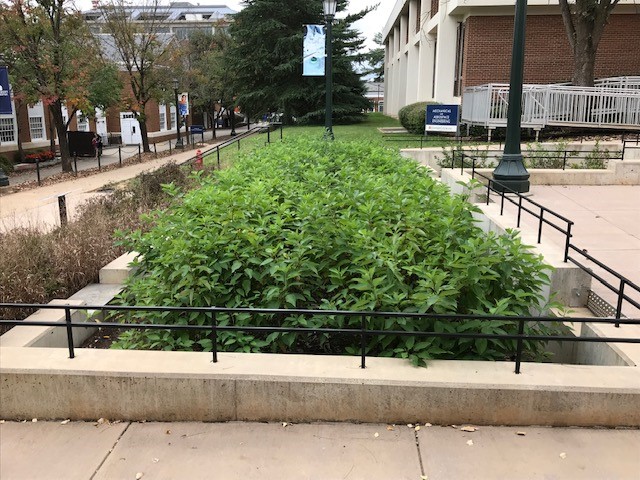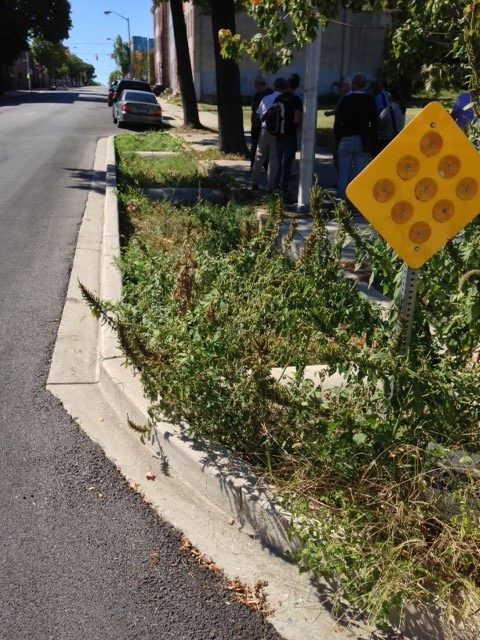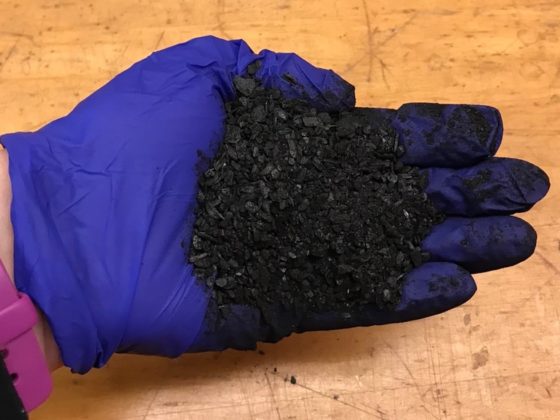What is Green Infrastructure and why is it all the rage?
Green Infrastructure (GI) has emerged as a rapidly growing paradigm to improve the management of urban environments and quality of life. When impervious surfaces (streets, parking lots, sidewalks, buildings) replace vegetation, much more rain and snowmelt will run off the urban landscape, causing flooding and pollution problems in streams that drain these landscapes. The Green in GI is intended to mimic the evaporation and infiltration functions of vegetation cover which is vastly reduced in urban areas. GI includes designed and engineered systems such as rain gardens, green roofs, and bioretention swales, but also planted or remnant tree cover.

Current initiatives in GI are part of an evolution of paradigms to manage urban stormwater. The first approach was to provide rapid drainage of stormwater and sanitary effluent through a system of sewers, intended to reduce health hazards from the large volumes of rain and waste water produced in the urban landscape. These sewer systems either combine both stormwater runoff and effluent in the same pipe system or separate them into two systems, and are designed to route effluent to a centralized water treatment facility and stormwater into local streams. However, both combined and separate systems often overflow during heavy rains, spilling polluted water into local streams.
The unintended consequences of efficient drainage of stormwater and effluent was to shift pollutants to downstream water bodies, and to cause large increases in peak streamflows from impervious areas, increasing erosion and flood hazard. The next paradigm, beginning after the Clean Water Act of 1972, attempted to recreate a “pre-development streamflow,” by catching and slowly releasing stormwater in engineered detention (storage) basins. While this approach achieved some of its goals such as reducing the peak rates of stormwater runoff into streams, this approach did little to reduce the total volume of flow or amount of pollutants.
Prospects and barriers
GI is the newest paradigm, designed to recreate predevelopment hydrology by recreating the effects of the predevelopment ecosystem. GI systems are designed to reproduce the effects of natural ecosystems, providing multiple benefits, known as ecosystem services. In addition to absorbing rainfall and reducing runoff at the source through infiltration and vegetation water use, and storing and filtering water and pollutants, GI has the potential to contribute to a reduction in urban heat island severity, improve air quality, provide increased songbird habitat, and provide psychological benefits derived from increased exposure to vegetation.
If there are so many benefits to these newly designed “ecosystem patches,” why haven’t they gained ground more rapidly? The new shift to a GI paradigm follows a century of infrastructure designed for rapid drainage through stormwater drains, pipes, outfalls. These practices are built into municipal engineering design codes. GI is often restricted to public spaces, and can compete for space with parking, clearances for emergency vehicles, and electrical, natural gas and telecommunications infrastructure. Our experience with several stormwater utilities suggests that barriers to developing GI on public or private properties include residents’ negative perceptions, or limited understanding of what GI will look like, how much maintenance will be required, what impacts on property values may be and what local benefits, as opposed to downstream benefits, will be gained. GI systems can succeed or fail to achieve goals due to a number of reasons, including engineering design, selection of vegetation resilient to climate and landscape position, and the level of acceptance by residents.

How do we push this forward?
Multi-billion dollar investments at municipal levels are being made by combined public/private partnerships to develop GI to complement the traditional “hardened” civil (grey) infrastructure to treat and reduce stormwater pollution. However, current design and implementation of GI is perhaps best described as an experimental phase, particularly when scaled to whole watersheds. GI systems take the form of “novel ecosystems,” designed as integral parts of communities. While we have amassed a good deal of knowledge about natural (or lightly managed) ecosystems, the effective integration of GI into urban social and ecological systems is much less understood. It is critical that we translate knowledge about the resilience and function of natural ecosystems, and translate basic principles to urban ecosystems and GI within the context of the social, economic and existing infrastructure conditions, and the desires and perceptions of the local community.

The development of design guidelines for GI integration into urban watersheds, based on ecosystem and social science theory, is a major challenge requiring collaboration and synthesis across a suite of disciplines and professions. To advance and improve both design and implementation of GI, there is a need for systematic, long term data, carefully tested and documented models and case studies. Development of participatory design of GI will also improve outcomes, but requires a new generation of models, visualization and design tools accessible to individuals and communities.
Larry Band is the Ernest H. Ern Professor of Environmental Science and also a Professor of Civil and Environmental Engineering at the University of Virginia. His research is focused on eco-hydrology spanning both natural and urban watersheds. Key references relevant for this post are: Miles, B. and L. Band, 2015, Green infrastructure stormwater management at the watershed scale: urban variable source area and watershed capacitance, Hydrological Processes, 29, 2268-2274. J. Duncan, C. Welty, J. Kemper, P. Groffman, and L. Band, 2017, Dynamics of nitrate-concentration discharge patterns in an urban watershed, Water Resources Research, 7349-7365.





